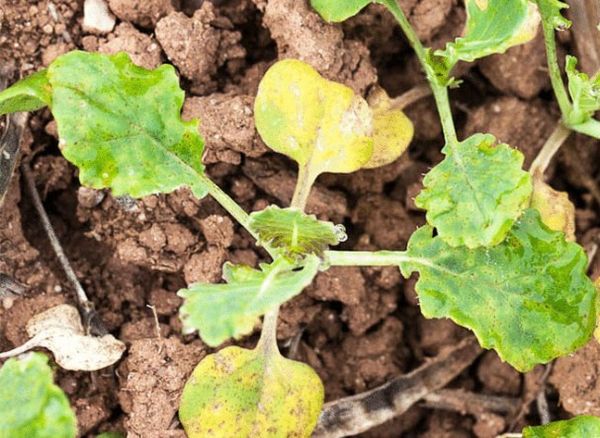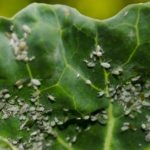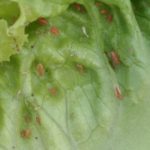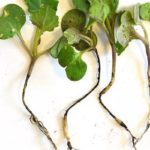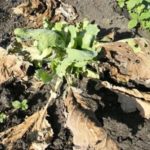Cabbage refers to the capricious crops, if you grow it in the home. This is due to a number of factors: a violation of the temperature regime, excessive watering, an insufficient amount of dressings, infection with diseases and pests, why it can begin to dry out at least. Seedlings dry and turn yellow in almost every novice gardener.
Also, the leaves can curl or fall, become covered with colored spots, these signs need to pay special attention, because the plant may begin to disappear and eventually die.
Table of contents
Why cabbage leaves may turn yellow, dry or wither
Gardeners point out two main reasons why cabbage leaves begin to tie:
- improper care;
- defeat diseases and pests.
If cabbage leaves begin to curl and dry out, then this is a sign of the presence of pests on the plant.
Pest damage
- Aphid. Small bright insects infect leaves of plants. They multiply in large numbers and suck out juice from young saplings, which is why the plant may start to die.
- Spider mite Infection manifests itself in the form of barely noticeable cobwebs on the back of the sheet, sticky secretions and black specks. The surface of the leaves becomes mottled with bright spots. Gradually, they begin to turn yellow and dry.
- Blackleg. The disease is characterized by blackening and thinning of the legs of the plant. Gradually, it breaks and the sprout dies.
- Fusarium The disease is characterized by yellowing and binding the leaves of the seedlings.
- Kila. Characterized by the formation of tubers on the roots of seedlings. It is detected during picking or landing in open ground. The disease is transmitted through the soil in which the plants grew.
- Aphid
- Spider mite
- Blackleg
- Fusarium
- Quila
Breach of care
- Temperature mode. In the early stages of growth, plants are placed in cool rooms. The conditions of the window sill when the heating is working create a too hot climate that contributes to the drying of the foliage.
- Lighting. The lack of lighting leads to poor development of seedlings and the discharge of green mass. Choosing a place for placement of seedlings, you should focus on good lighting or organize additional lighting.
- Priming. Most cabbage varieties grow well in a neutral or alkaline environment. Plants do not tolerate high acidity.
- Watering. Cabbage is a moisture-loving plant, but an excess of watering leads to acidification of the soil.As a result, the supply of roots with oxygen is disrupted. As a result of oxygen starvation, the leaves dry and wither.
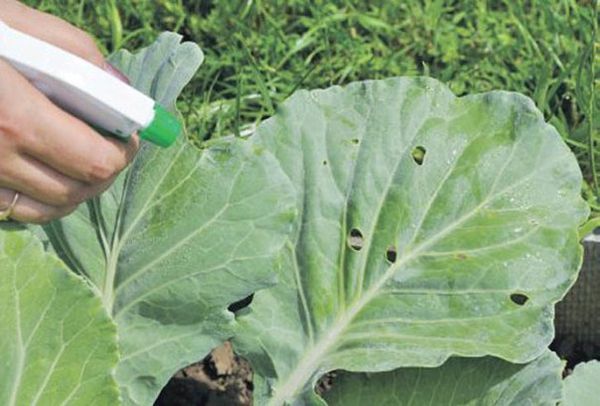
Methods of dealing with yellow foliage
Compliance with the rules of seedling care and disease prevention will help prevent drying in young plants.
Proper feeding
Cabbage grows well with abundant feeding. With a lack of fertilizers directly after planting in the ground, the leaves may turn yellow and dry.
Experts recommend fertilizing 2-3 times at the seedling stage and 3-4 times during the season after landing in open ground. The last dressing is carried out at the stage of head formation. Nitrogen, phosphorus potash fertilizers, and the introduction of iron help to make the leaves yellow.
Organization of competent watering
Excess irrigation leads to the development of diseases and rotting of the root system. Seedlings on the windowsill watered 1-2 times a day. Before watering, check the condition of the soil. The top layer must be dry.
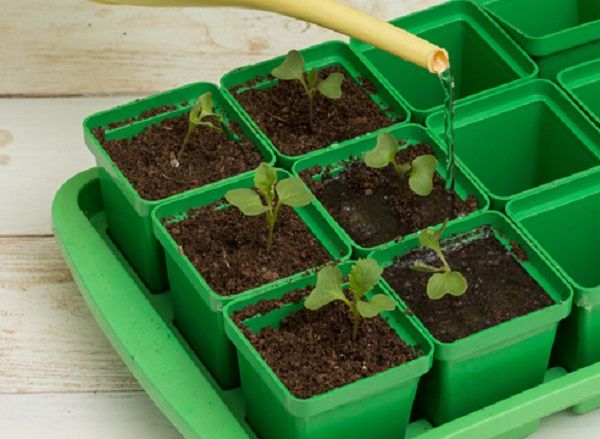
Observance of light and temperature conditions
After germination, seedlings need to be placed in a cool room with a temperature not higher than 12 degrees. Excess heat leads to the stretching of sprouts and the development of a weak root system. Lack of light also leads to stretching of germs.
The situation can be corrected by changing the temperature and light conditions, additional lighting in the dark time of the day, watering with anti-stress drugs Epin-Extra, Zircon.
Landing in the ground
When landing on ridges, damage to the root system occurs. As a result, the lower leaves turn yellow. In this situation, the seedlings additionally feed up, and dry leaves neatly cut off.
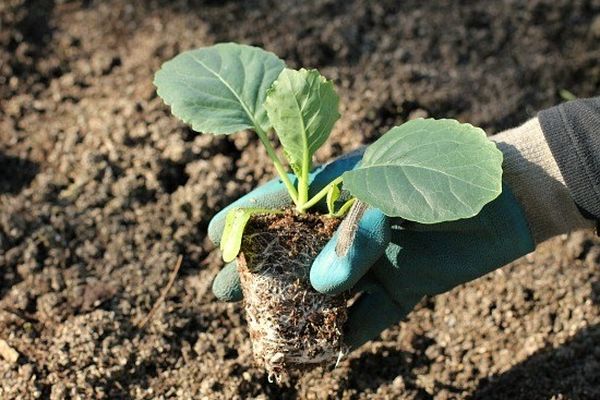
Pest control
For pest control, pre-treatment of seeds is carried out before planting the seedlings. The soil in which the seedlings are placed is also subjected to antiseptic processing.
When aphids or spider mites are found, the leaves are washed under running water and sprinkled with a thin layer wood ash. Struck by a black leg or keeled plant it is recommended to destroy.
For healthy seedlings organize the right conditions of care (reduce watering, reduce the temperature, reduce acidity, thinning planting).
Causes of poor seedling growth
In some cases, even good seedlings can produce poor growth rates. Experts identify a number of reasons that are associated with poor development of seedlings:
- seed penetration;
- excessive or insufficient watering;
- violation of temperature;
- dry air in the room with landings;
- strong drafts;
- disease and pest damage;
- thickening of landings;
- lack of lighting;
- lack of nutrients in the soil.
All these reasons lead to the development of a weak root system and dysplasia seedlings.
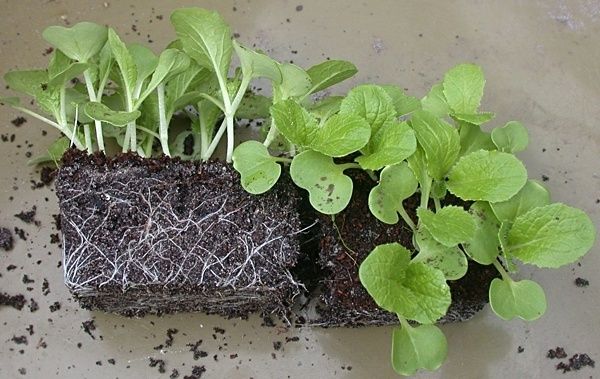
Effective growth stimulation methods
Proper selection of inoculum and its insertion into the ground ensures fast growth of strong plants.
- Selection of seed. For planting use only flat seeds without visible damage. It is important to check the expiration dates on the packaging.
- Selection of soil. Cabbage grows poorly in sour soil. An effective method of stimulation is to reduce acidity. To do this in the ground lime.
- Disinfection and soaking of seeds. Cabbage seeds germinate faster and are less susceptible to pests if they are soaked in a cold solution of manganese or a growth stimulator.
- Deepening and thickening landings. Seeds are sown at a depth of 1 cm. The great depth of the holes leads to poor germination of seedlings. After germination, cabbage is thinned. On 1 sprout allot an area of 2 × 2 cm.
- Top dressing. Stimulate the growth of seedlings allows timely feeding. It is produced in three stages. The first 10 days after the picks. The second stage - 2 weeks after the first feeding. The third stage - 4-5 days before landing in the ground.
- The use of growth stimulants. With proper care and insufficient growth of cabbage stimulants are used. Preparations are used for soaking seeds, planting plants in the ground, the appearance of adverse conditions in the form of disease, frost, and insufficient light.Effective drugs: EPIN, Epin-Extra, Immunocytophyte, Heteroauxin.
Growing strong seedlings without dry and yellow leaves at home is quite possible. The main thing is to follow the rules of caring for plants, choose a suitable place and in time do disease prevention and when growing a house on a window and on a bed.
